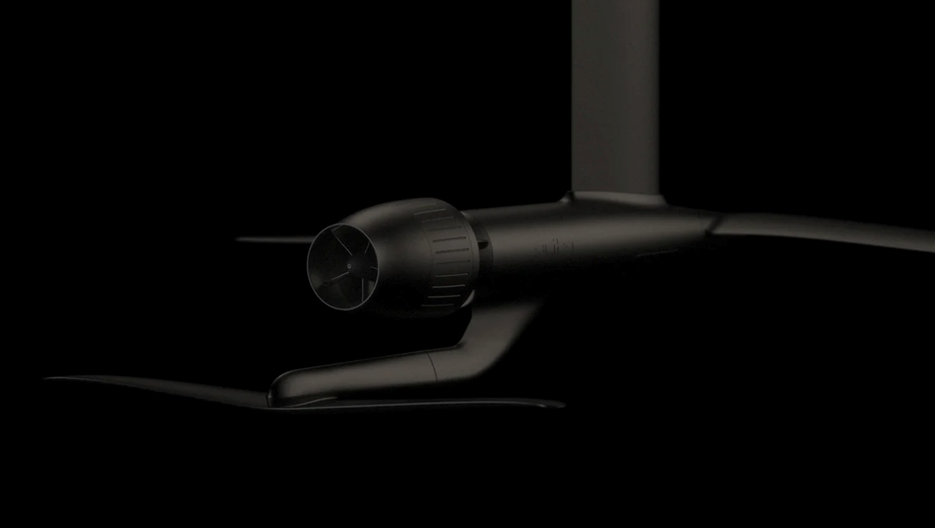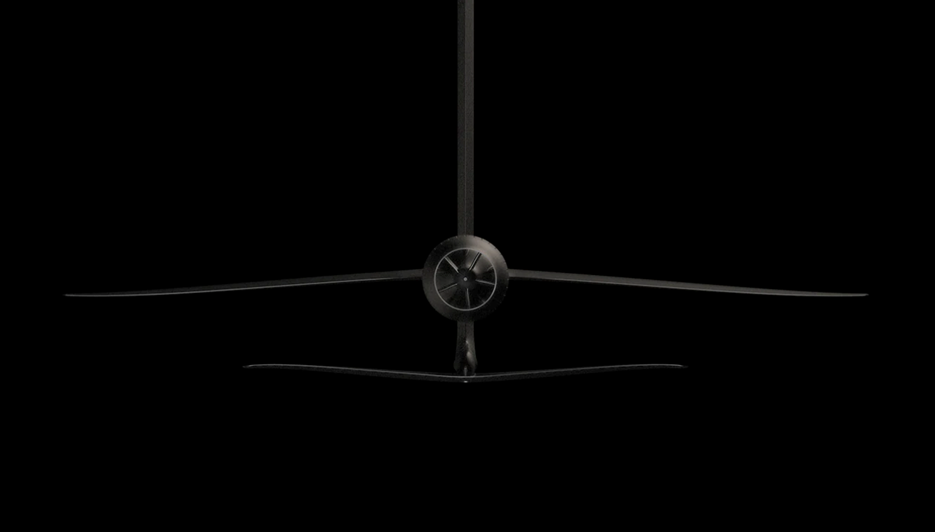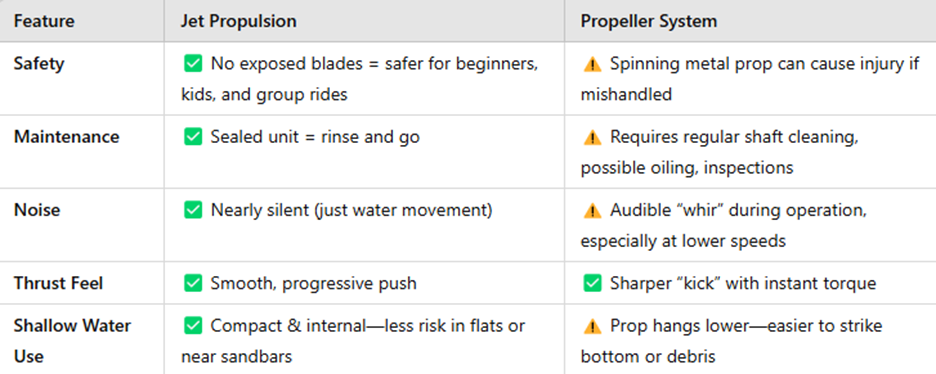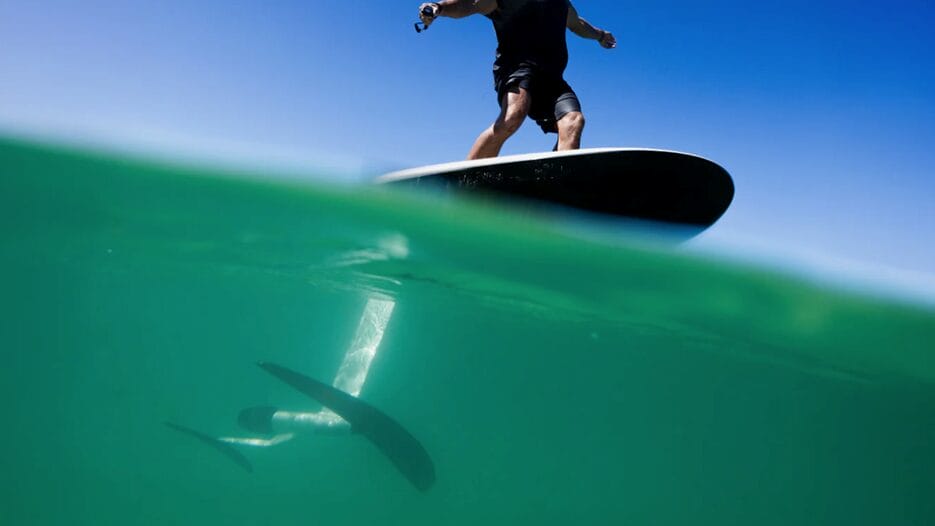


Introduction: What’s the Big Deal with Jet 2?
Maybe you saw it pop up on your feed.
Maybe a friend mentioned it.
Or maybe you’re just deep in the research spiral, looking for your first eFoil and wondering…
“What even is jet propulsion—and is it actually better?”
If you’ve landed here, chances are you’re somewhere between curious and cautious. You’re not just buying a toy; you’re thinking about an experience. Maybe it’s your first board. Maybe it’s your next one. But either way, you want to understand what this whole Fliteboard Jet 2 thing is—and why people are calling it the future of eFoiling.
That’s what this guide is here for.
We’re not here to hype up the latest gadget. We’re here to show you what’s really changed, why it matters, and how Jet could completely reshape the way you ride , especially if you’re a beginner considering eFoil lessons in Panama City Beach and want a board that grows with you.
If You’re New to eFoiling, You’re Not Alone
Let’s start with this: most people looking into eFoils right now? They’re not experts.
They’re curious. They’re cautious. And they’re asking all the right questions:
If any of that sounds familiar—you’re in the right place. We’ve taught hundreds of new riders at Emerald Wake, and this exact conversation comes up all the time on the docks.
So, we built this guide to give you real answers. Clear, honest, and beginner-friendly.
Why Jet Matters: A Real Shift, Not Just an Upgrade
Fliteboard didn’t just bolt a new engine on and call it a day. With Jet 2, they reimagined how eFoils should work for the long haul. This isn’t about shaving milliseconds off your speed—it’s about creating a smoother, safer, simpler way to fly over water.
Think about it like this:
And for anyone who’s felt a little nervous around spinning propellers or worried about riding near family or shallow water—Jet 2 changes the game.
Built for the Panhandle—and Beyond
Here along the Florida Panhandle, where Emerald Wake is based, the water tells a story. From the flats of Santa Rosa Beach, to the emerald shallows of Destin Harbor, to the family-friendly waters of St. Andrews Bay in Panama City Beach—Jet just makes sense here.
We’re talking:
The more we use Jet in lessons, demos, and community rides, the more convinced we are: this is the start of a new chapter in the sport.
Here’s What You’ll Learn in This Post
By the end of this guide, you’ll know:
We’ll even dig into a few honest downsides—because as much as we love Jet, this isn’t a one-size-fits-all tool. But if you’re looking for confidence, calm, and clean design, Jet might be the perfect way to begin.
What Is Jet Propulsion in an eFoil?

If you’re new to eFoils or just curious about what makes the Fliteboard Jet 2 different, you’re probably wondering: What is jet propulsion, and how does it actually work on a board?
Let’s break it down in beginner-friendly terms.
Jet Propulsion = No More Propeller
Traditional eFoils use a spinning propeller (just like a boat or drone) to push you forward through the water. You press the trigger, the prop spins, and off you go.
Jet propulsion works differently. Instead of using exposed blades, it draws water into a sealed chamber and pushes it out through a narrow nozzle—creating smooth, consistent thrust. It’s kind of like a mini jet engine underwater.
If a propeller is like a blender blade, jet propulsion is more like a Dyson vacuum or the engine on an airplane: enclosed, efficient, and surprisingly quiet.
How Flite Jet Works: A Simpler, Smarter System
The Flite Jet 2 system is fully integrated inside the fuselage. That means:
It’s an all-in-one sealed unit—so the only thing you’ll be thinking about is the ride, not the upkeep.
Plus, since there’s nothing spinning outside the wing, there’s less drag and less chance of bumping into anything in the water (including yourself or others).
Built for the Gulf: Quiet, Clean, and Saltwater-Ready
If you’ve ever ridden around Destin Harbor or the bays near Panama City Beach, you know how salty, sandy, and shallow things can get.
Jet propulsion is ideal for these local conditions:
This is why Emerald Wake offers Jet-equipped demos for first-timers, families, and anyone who wants the easiest way to fall in love with flying over water.
Jet vs Prop: The Real Differences

You’ve seen both terms—jet and prop—and maybe even read debates online. But what’s the actual difference between jet and propeller propulsion in an eFoil?
Let’s break it down with clarity, not tech jargon. Because if you’re trying to choose your first board—or just want to know what’s changing in the sport—this part really matters.
Jet vs Prop: A Side-by-Side Breakdown
| Feature | Jet Propulsion | Propeller System |
| Safety | ✅ No exposed blades = safer for beginners, kids, and group rides | ⚠️ Spinning metal prop can cause injury if mishandled |
| Maintenance | ✅ Sealed unit = rinse and go | ⚠️ Requires regular shaft cleaning, possible oiling, inspections |
| Noise | ✅ Nearly silent (just water movement) | ⚠️ Audible “whir” during operation, especially at lower speeds |
| Thrust Feel | ✅ Smooth, progressive push | ✅ Sharper “kick” with instant torque |
| Shallow Water Use | ✅ Compact & internal—less risk in flats or near sandbars | ⚠️ Prop hangs lower—easier to strike bottom or debris |

Safety: Why Jet Wins for Beginners
For new riders, safety is everything. No one wants to be thinking about blade proximity when they’re learning to balance or falling into the water.
Jet propulsion is completely internal, meaning there’s nothing spinning outside the board. No blade, no risk of cuts or tangles. It’s the kind of tech that gives riders—especially kids, parents, and newcomers—peace of mind.
Maintenance: Rinse, Ride, Repeat
Owning a traditional propeller eFoil means dealing with:
With Flite Jet 2, it’s a sealed unit. Just rinse it off, charge it up, and you’re ready to go. For coastal riders in places like 30A and Panama City Beach, where saltwater and beach sand are constant companions, this is a big win.
Sound: The Silent Revolution
One of the biggest surprises when you ride a jet-powered Fliteboard? How quiet it is.
Jet propulsion makes a soft whoosh—like water moving gently past your legs. No buzzing, no gear-grinding noise, just peace.
Whether you’re sneaking in a sunrise ride near Crab Island or cruising past dolphin pods, silence adds a whole new layer of magic to your ride.
Thrust & Performance Feel
This is one area where prop still holds a small edge—for now.
Propeller systems tend to give a punchier takeoff. You press the trigger and feel the immediate burst.
Jet propulsion, on the other hand, gives you a smoother, more linear acceleration. It’s responsive, but not jolting. For new riders, that predictability is actually a huge benefit—no overcorrections, no surprise bursts.
And for 90% of riders, the difference isn’t a dealbreaker—just something to consider depending on your goals.
Go Shallower, Ride Longer
One often overlooked perk: jet systems are better for shallow waters.
Because there’s no exposed prop below the wing, you can ride confidently near sandbars, tidal flats, and sea grass beds—without worrying about nicking your gear or getting stuck.
This makes jet propulsion ideal for places like:
Jet vs prop isn’t just a spec sheet comparison—it’s a lifestyle difference. And if you’re looking for safety, simplicity, and quiet elegance, Flite Jet 2 checks every box.
Why Fliteboard’s Move Matters

Fliteboard didn’t just build a jet-powered eFoil because it could. It did it because this is where the sport is going. Jet propulsion in eFoils isn’t a passing trend—it’s a signal.
A signal that the future of eFoils is safer, sleeker, quieter, and easier for everyone to enjoy. And Fliteboard, once again, is leading the charge.
Fliteboard Has Always Been Ahead of the Curve
If you’ve been around eFoils for a while, you know that Fliteboard has set the standard since day one. From precision-engineered carbon boards to ultra-smart remote systems, they’ve shaped what premium eFoiling looks and feels like.
The Fliteboard Series 4 brought in lighter builds, better range, and smarter firmware. Now, Jet 2 builds on that legacy—with a propulsion system designed for the next era of riders.
Think about it like this:
That’s what Fliteboard is doing with Jet 2.
It’s Not Just Innovation—It’s Intention
Jet 2 isn’t just a “feature.” It’s a philosophical shift in what riding should feel like:
This shift is especially important for new riders, families, and adventure seekers around places like Destin, Santa Rosa Beach, and Panama City Beach, where calm, shallow waters meet curious minds every day.
The Future Isn’t Far Off—It’s Here
When you ride the Flite Jet 2, you’re not riding some concept or prototype. You’re riding what the next generation of eFoils will look like—today.
That’s why Emerald Wake is already offering Jet demos and lessons on the Emerald Coast. Because we don’t just believe in the future—we want you to feel it under your feet.
Who Might Still Prefer a Prop?

We’re all in on Jet—but let’s keep it real. While Jet propulsion is an incredible leap forward for most riders, there’s still a small segment of the eFoil community that might prefer to stick with propeller systems—at least for now.
For Some Pros, Prop Still Has an Edge
If you’re into hard carving, big tricks, or want that snap acceleration, a traditional prop might still be your go-to. Here’s why:
That said—most of this only applies to experienced, freestyle-focused riders who are pushing the sport’s limits. If that’s not you (yet), Jet still holds the clear advantage.
But for 90% of Riders? Jet Just Makes More Sense
The truth is, most people who are getting into eFoiling:
That’s exactly who Flite Jet 2 was designed for.
At Emerald Wake, we’ve seen even experienced riders start on prop and switch to Jet—especially after trying it in the water. Once you feel the silence, the safety, and the simplicity, it’s tough to go back.
It’s Not Either-Or. It’s Evolution.
Choosing Jet doesn’t mean you’re giving up performance—it means you’re embracing a new standard. Just like electric cars didn’t replace gas engines overnight, we’re watching a transition happen.
Fliteboard isn’t saying Jet is for everyone, but they are saying it’s the future. And we agree.
Final Thoughts: Jet Is the Next Wave

You’ve made it this far, and maybe now you’re starting to see it: Jet propulsion isn’t just a feature—it’s a full-on shift in how we eFoil.
We’re not talking about subtle upgrades or marketing fluff. We’re talking about a safer, quieter, cleaner ride that’s opening the door for more people to fall in love with the water.
Jet = Simpler. Safer. Smarter.
If you’re just getting started or thinking about upgrading your gear, here’s what Fliteboard’s Jet 2 represents:
Jet propulsion is the kind of innovation that makes you wonder why we ever did it any other way.
This Is the Moment eFoiling Grows Up
Just like smartphones replaced buttons with gestures and Teslas replaced engines with silence, Jet is changing the way we think about movement on water.
It’s not about chasing speed records or stunt videos—it’s about making the sport more accessible, more beautiful, and more in sync with nature.
And once you feel that whisper-quiet glide across the water, you’ll get it.
Are You Ready to Ride the Future?
Whether you’re brand new to the sport or looking for a better way to ride, Jet is calling. The technology is here. The water is ready. And Emerald Wake has the boards, the lessons, and the stoke to help you ride the next wave.
Frequently Asked Questions

What is the difference between jet and prop eFoils?
Jet eFoils use an internal propulsion system that draws in and pushes out water through a sealed nozzle—no exposed blades. Prop eFoils use an external spinning propeller to generate thrust. Jet is safer, quieter, and better for shallow water riding.
Is Flite Jet better for beginners?
Yes. Flite Jet 2 is one of the best beginner eFoils available. It’s smoother to control, has no exposed blades, and requires less maintenance—making it ideal for new riders or families learning together.
Can you use jet eFoils in shallow water?
Absolutely. Jet propulsion systems are compact and have no external spinning parts, which makes them much safer and more functional in shallow areas like sandbars, flats, or near the shoreline.
How does Flite Jet 2 work?
Flite Jet 2 uses a fully enclosed water intake and jet nozzle system to generate smooth thrust. It’s built into the fuselage and requires no external propeller, making it low-maintenance and ultra-safe.
What are the benefits of jet propulsion?
Jet propulsion offers safer operation (no blades), quieter rides, easier cleaning, better performance in shallow water, and a smoother acceleration profile. It’s ideal for both new and casual riders looking for a stress-free experience.
fest, and quietest ride on the water, there’s no better way to start than with the Fliteboard Jet 2. Whether you’re a total beginner, a returning rider, or just eFoil-curious, Emerald Wake has everything you need to take off.
Here’s how to ride the next wave:
Jet is the future. And the future feels amazing.
Book your ride now or contact us with any questions—we’d love to help you fly.
If you have any questions about Jet vs standard propulsion, call (850) 400-8500 or email us at [email protected] for a custom recommendation. We offer shipping throughout the USA and sales, demos, service, and repair from our three locations in Panama City Beach, Florida, Pensacola, Florida, and Atlanta, Georgia.
Please fill out this form and someone from our team will contact you as soon as possible. You can also reach us by email at [email protected]